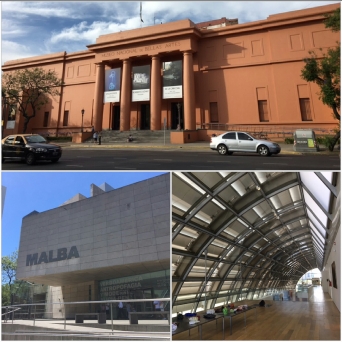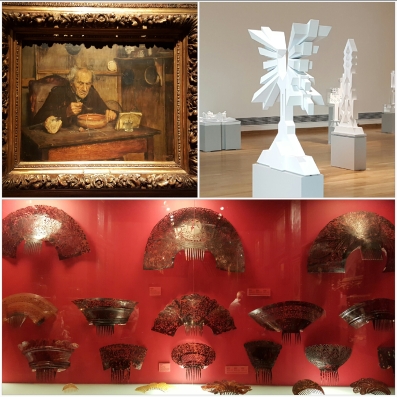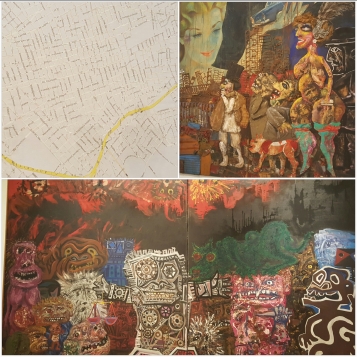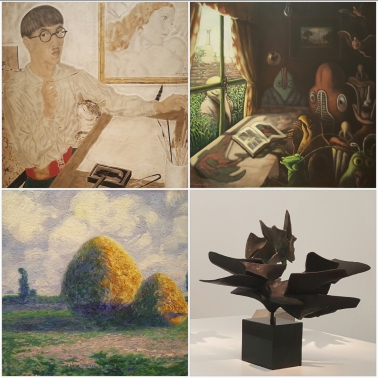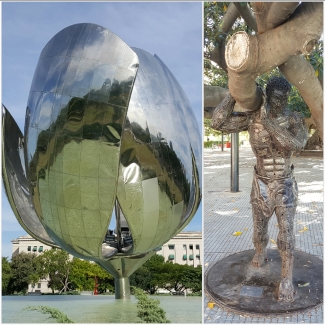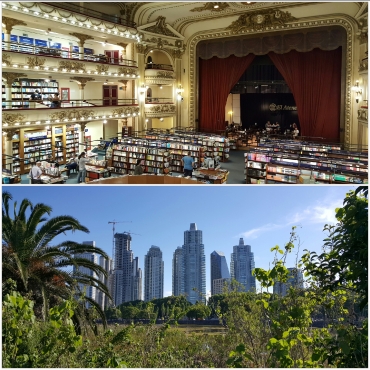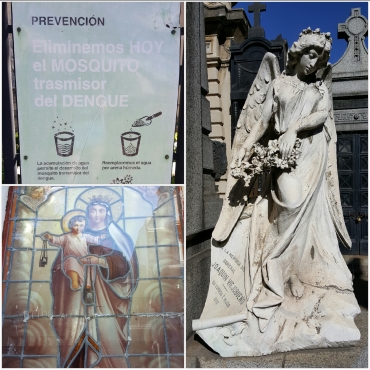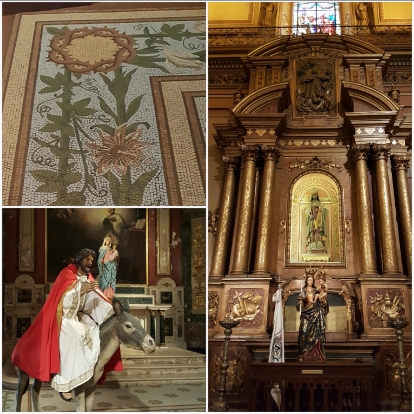In a break from our usual kind of travel, we took a two-week cruise from Buenos Aires around Cape Horn and up to Santiago, Chile. We covered the eastern coast of South America by going a little northward to Uruguay before heading southward to other cities in Argentina and the Falkland Islands (which I’ll talk about in a separate post).

Our first stop was Montevideo, Uruguay, just a few hours across the Rio de la Plata from Buenos Aires. I’ve never been so quickly enchanted by a city as I was here. It has about a million and a half people people compared to BA’s 13 million and feels a lot homier. We walked through the touristy market and souvenir vendors next to the cruise dock to the more local areas of town. Part of the city lies on a peninsula ringed by a wide boardwalk which we followed right to one of the most popular beaches.

I don’t know if it was due to the summer weekend (large swaths of South America close for Saturday and Sunday) or because we had just been living in the center of a much larger city, but Montevideo’s streets felt remarkable quiet. The main shopping district and plazas were full of activity, but just a few blocks over it was peaceful. We came across a farmer’s market on a tree-lined street not too far away from the house we will be renting in another couple months. It even had a cheese truck, so I’ll be set. We spent the rest of the hot afternoon drinking light local beers at a parilla, envying the order of grilled meats the table next to us was devouring.

A bit further up Uruguay’s coast is Punta del Este, the country’s main ocean-front resort. This might have been where everyone from the capital was at – there are hundreds of hotels and sandy beaches forested by umbrellas, and all seemed filled to capacity. We were only there for a few hours and that was probably enough. Once you’ve window shopped, eaten gelato (Freddo’s!), hung out at the beach, and seen the giant hand, there isn’t much else to do. Since it is built for tourists, prices tend to be higher as well. I will say that their Disco grocery caters to more diverse/tourist tastes than most, meaning that they had peanut butter and Nutella, and even some spicy sauces. Sadly, since Chile is strict about bringing food into the country, I didn’t even bother to stock up.

Now turning southward, we skipped all the way down the seaboard to Puerto Madryn, Argentina. This was the first opportunity to see penguins, though we didn’t pay for any of the tours that went to the colony. There are a few hotels and a new shopping center near pier and some tour sales, but off the main street it felt like a small town. We stumbled onto La Abuela Dorotea, a shop offering wine and chocolate at cheap prices. Naturally we bought both. Aside from this little bit of purchasing, we walked along the tide flats. The beach here has a very shallow incline and low tide makes it grow hundreds of meters wider. The space gets turned into impromptu sports fields and a running track. It also means that the pier has to be more than a kilometer long to reach deep enough water for the cruise ship to dock.

At the very bottom of Argentina is Ushuaia, the traditional jumping-off point for Antarctic expeditions. The main pier was full of other cruises, most heading south at very high prices. Right outside the port and along the waterfront are signs asserting Argentina’s claim to the Falklands, here called the Islas Malvinas. A memorial to the 1982 war features a map of the islands in cutout, as though missing from their map. Despite these claims, we heard the Falklands described as more English than England, a claim that certainly held up while we were there.
The town is surrounded by the Martial Mountains, a welcome relief after months of flat terrain. A couple subdivisions even splash up the nearest slopes. We worked our way up a maze of staircases until our path upward was blocked by an large, angry looking dog and we decided our current view was good enough. Clouds and fog are pretty much the daily standard, so only the closest mountains occasionally popped into view, their summits white with relatively fresh snow. Another good vista is from the waterfront near the Aeroclub. Our landscape-looking options pretty much complete, and since ship drinking is expensive, we searched out a local bar and thankfully ended up at Klobber. Turned out they weren’t technically open yet, meaning the kitchen was closed, but they were more than willing to pour us their beers. The father and son running the pub were also the brewers, working out of Rio Grande. Their stout is excellent – the best we’ve had in Latin America. With some alcohol behind us, we made our way back to the ship so we could head into Chile.

